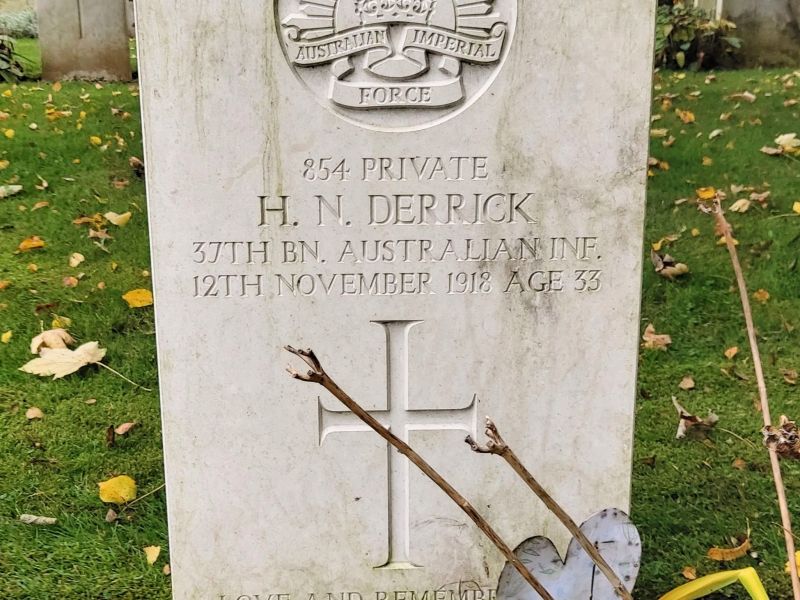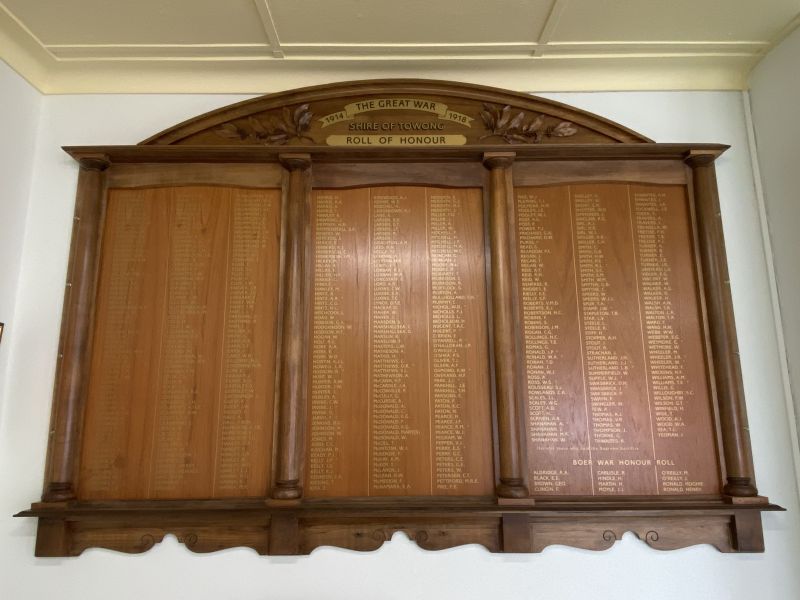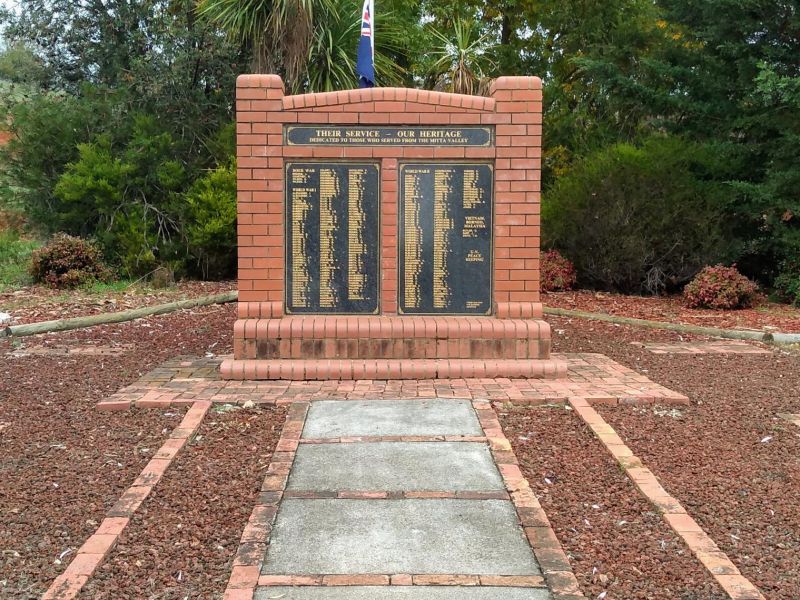Harry Nutman Derrick
Harry was born in 1886 In Tallangatta, Victoria. He was the second eldest of four children to John Henry and Jane (née Sinclair) Derrick. When Derrick was only six years-old, his mother passed away suddenly; she was only 29. John then had four children under the age of eight to raise. John was the head teacher at the Tallangatta Valley State School. Reports from the Education Department indicate that he was extremely professional. In 1898, Harry passed his Merit Certificate at the school under the tutor of his father. By 1905 the family had moved to Huntly, near Bendigo. Tragedy struck the Derrick family once again in 1908. John was to marry a young lady in Bendigo on the 4th of July 1908 but instead went missing. His body was found next to the railway line at Mitcham ten days later. He had been hit and killed by a passing train. By 1912, Harry had moved back to Tallangatta and worked as a labourer in the district.
Harry underwent his medical examination at Tallangatta on the 5th of February, 1916. A little over two weeks later he was sworn in and then one week later his enlistment was certified Lieutenent Colonel Wood of the 37th Battalion. Harry was alloted the Regimental Number 854 and placed in C Company.
After initial training the 37th Battalion embarked on HMAT A34 Persic at Melbourne. On the 25th of July they disembarked at Plymouth in the south of England. Further training took place in Wiltshire in preparation for their time at the front line. By the 22nd of November the battalion had arrived in France. Within a week they had began to occupy the trenches on the Western Front, just in time for the worst winter in many, many years.
The battalion fought its first major battle at Messines, in Belgium, between the 7th and 9th of June. It was during this time that Harry received a gun shot wound to his shoulder. He was transferred from the 7th Canadian General Hospital to the Hospital Ship Princess Elizabeth. Within five days of him being wounded, Harry was admitted to the Voluntary Aid Detachment (VAD) Hospital at Cheltenham.
Harry rejoined his battalion on the 29th of September 1917, just in time to participate in the battle of Broodseinde on the 4th of October. One week later was the opening day of the battle of Passchendale, often referred to as the Third Battle of Ypres. During this offensive he was wounded again, this time in the right foot. Harry spent a week at the 3rd Australian General Hospital in Wimmereux in France. His would was found to be be sufficiently severe to warrent him being sent back to England. Harry would spend the next six months in hospitals and convalescing depot before arriving back to his battalion on the 17th of April 1918.
The Allies launched their own offensive on the 8th of August, however the battalion was in reserve and not ordered into action. The end of the month saw the German forces at their final stronghold at Mont St Quentin. This village stood out in the surrounding countryside and made it a perfect observation point and a highly strategic location. The battalion was part of the initial advance. Although reaching the summit of the Mont, the Australian battlalions were unabled to hold the summit when German reserves counter-attacked. On the 1st of September the Mont was retaken and remained in Australian hands.
The 37th Battalion withdrew to close support on the morning of the 31st of September and the 38th and 39th Battalions took over the line. During the roll call that took place after the battle Harry was listed as missing. Two months later it was reported that he was a prisoner of war.
Harry’s Red Cross Society Wounded and Missing Enquiry Bureau file includes a witness statement by 4508 Pte. E.W.Gorton of the 47th Battalion, explaining what happened to Harry.
“re 845 Pte. Henry Nutman Derrick, 37th Bttn. A.I.F. who died on 12.11.18. As a matter of fact I only saw him a few times, the last time was just before he died - he was looking very well but had a slight limp as he was wounded - I believe it was some where [sic] in the thigh, through being neglected and no dressings lock jaw set in and died. He had a good burial by his English mates and was buried in Quedlenburg.”
Harry was buried in the Niederzwehren Cemetery in Kassel, Germany. He is also remembered on the Australian War Memorial Roll of Honour, the Eskdale War Memorial, the Tallangatta Valley War Memorial, and the Towong Shire Boer War and WW1 Roll of Honour. For his service during the First World War, he was awarded the British War Medal and the Victory Medal.

 Stephen Learmonth
Stephen Learmonth
